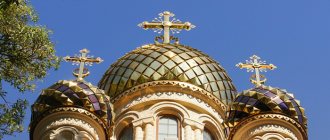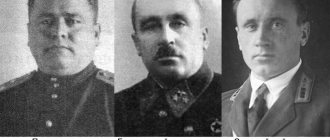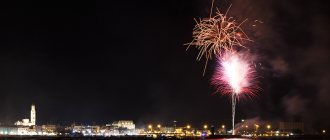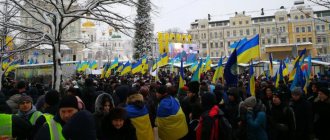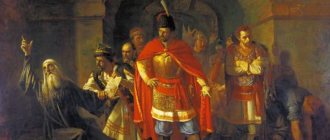The period of medieval philosophy in Europe covers ten centuries (from V to XV). The era of the Middle Ages in philosophy is usually divided into three more successive stages: apologetics, patristics, scholastics.
The main feature of medieval philosophy was theocentrism, and it itself was based on biblical dogmas. According to many people, the Middle Ages are associated with a “dark time” when European science practically stopped in its development. However, was this really the case? The article talks about such periods of the Middle Ages as patristics and apologetics, as well as their most famous representatives.
Apologetics and Patristics
The philosophy of the Middle Ages is sometimes quite aptly called “philosophy of the text,” because the philosophers of that time were mainly concerned with the interpretation of religious scriptures. The period itself begins in the 5th century, and scientists associate its beginning with the collapse of the powerful Roman Empire. Apologetics and patristics are precisely the first periods in the philosophy of the Middle Ages, following each other. It is these periods that will be discussed in this article.
Apologetics is the first movement of medieval philosophy that arose with the goal of protecting the ideas of Christianity from the pagan ideas that were dominant at that time. Apologists saw the teachings of Christianity as the basis of philosophy.
Later, patristics emerged - the teaching of the so-called “Church Fathers”, who outlined the key provisions of Christian philosophy and theology. Complex religious-speculative systems were developed during this time.
Ancient Christian apologists
The phenomenon of apology in the history of Christianity meant for Christianity the acquisition of the gift of generally understandable speech, the ability for external dialogue and self-expression; gradual guessing of unspoken charismatic properties in a word and their careful explanation. This was an attempt to overcome the active alienation from the diverse historical (including intellectual) context of the first centuries. The Apology paved another - mostly rational - path for the successful preaching of the Good News. Finally, this phenomenon was a manifestation of a simple and natural will to live in conditions of equally natural, cruel persecution for a faith incomprehensible to the persecutors.
Apologists - (from the Greek apologeormai - I defend), the collective name of early Christian writers of the 2nd-3rd centuries who defended the principles of Christianity from criticism of non-Christian philosophers (Jews and pagans).
Christianity came into the world as a “temptation to the Jews” and as “foolishness to the Greeks” (1 Cor. 1:23). Spread of Christianity by the 2nd century. among all segments of the population of the Roman Empire caused a reaction from the pagan world. Christianity itself found itself in the position of an “illegal religion,” Christian communities fell under the category of “illegal assemblies,” and refusal to participate in pagan cults was considered a “crime against religion.” During this period, the first attacks on Christians from educated pagans appeared.
Apologists' mission
Christianity was viewed exclusively as a doctrine full of prejudices and fanaticism and threatening the ancient worldview. In addition, slander and gossip were spread about Christians, partly due to the secrecy of their meetings. The task of the apologists was to demonstrate to the pagan world the acceptability of Christianity from a variety of sides - civil, philosophical-theological, religious, cultural, etc.
Firstly, early Christian apologists tried to refute the slander leveled against Christians and give an answer to those who accused the Church of being a threat to the state. Emphasizing the high moral qualities of their co-religionists, they assured that their faith contributed to the preservation of peace and the well-being of both the emperor and the state, and society as a whole.
Secondly, early Christian apologists revealed the absurdity and immorality of paganism, its mythology and deities, and argued that Christianity has the only true teaching about God and the world. They not only refuted the arguments of philosophers, but showed that
their philosophy itself, having human reason as its only justification, cannot achieve the truth. While noting the parallels between pagan philosophy and Christian thought, many early Christian apologists at the same time presented philosophy as the predecessor of Christianity, and Christianity as a revelation of what philosophy only anticipated.
In addition, early Christian apologists refuted the accusations of monstrous crimes (atheism, cannibalism, Oedipal incest, etc.) leveled at Christians, proving their impossibility and absurdity. And finally, early Christian apologists revealed to the pagan world the Christian understanding of the Holy Scriptures, at the same time about Judaism.
The apologetic theme itself is present in the New Testament (see, for example, Acts 14:15–17; 17:22–31; Rom 1:18–32) and in the works of the apostolic men. However, unlike the apostolic men, who addressed primarily Christians, early Christian apologists. addressed their creations to a pagan audience, and this left an imprint on the range of problems they considered.
The main subject of apologetics is the basic truths of Christianity - the truth of the existence of God, the truth of the immortality of the human soul and the truth of Divine Revelation, since it is these provisions that form the basis of the Christian religion. Apologetics historically was one of the first forms of Christian theology. The task of the first Christians was to defend Christianity in the face of ancient, primarily Greek, wisdom, and in front of Judaism.
Justin Philosopher
The most famous of the Greek early Christian apologists of the 2nd century is Martyr. Justin the Philosopher († 165-166). Born in Palestine into a pagan family, he converted to Christianity after a long search for the truth. Mch. Justin, who after his conversion continued to “wear the philosopher’s cloak,” opened one of the first private Christian philosophical schools in Rome.
The main purpose of his works is to protect Christians from persecution “for their name alone,” as well as an attempt to present Christianity as worthy of a more careful and objective look from the enlightened Roman rulers. He also expounds Christian doctrine and describes the sacraments of Baptism and the Eucharist in the ancient Church.
In his first apology against Judaism, “Dialogue with Tryphon the Jew,” which is a recording of a debate between martyr. Justina with the learned Rabbi Tryphon, 3 main ideas are expressed: the temporary meaning of the Old Testament in contrast to the eternal and enduring commandments of the New Testament; justification for the worship of Christ as God; God's chosenness of Christian peoples.
Apologetic arguments against Greek wisdom boiled down, firstly, to showing that Christianity does not deny the achievements of the Greek world, but includes them, but at the same time, secondly, Christianity as a religion is immeasurably superior to Greek and Roman paganism, which especially manifested in the field of morality.
Justin recognized Christians as heirs of the best that the Divine Logos had ever sown in the world:
“Everything that is good said by anyone belongs to us Christians.”
St. Justin the Philosopher in the “First Apology” does not deny pagan philosophy the right to be called wisdom, but considers it wisdom of a lower order compared to Christianity, since paganism is not universal, speaks a complex language, is divided into many philosophical schools and is a creation of people, and Christianity open to everyone, stated simply and clearly, how true wisdom is one and given to us by God Himself in the Holy Scriptures. In addition, biblical wisdom is older than pagan wisdom, so that even some Greeks borrowed biblical principles for their philosophical teachings, as, for example, Plato borrowed his cosmological teaching from Moses.
What does the word "apologetics" mean?
Translated from Greek, “apologia” means “protection.” Apologetics is the defense of early Christianity against paganism. The most famous apologist was Justinian Martyr.
The word “apologetics” did not appear in philosophy by accident. The fact is that the writings of the defenders of Christianity were called apologies. Later, this name began to be used to refer to the entire historical period.
Literature
- Apology // Encyclopedic Dictionary of Brockhaus and Efron: in 86 volumes (82 volumes and 4 additional). - St. Petersburg, 1890-1907.
- Apologists and apology // Jewish Encyclopedia of Brockhaus and Efron. - St. Petersburg, 1908-1913.
| : Incorrect or missing image | To improve this article it is desirable:
|
The main tasks of the early apologists
Protecting Christian communities and defending the right to practice a new religion were the primary tasks that apologetics set for itself. This was expressed in the writing of works that were addressed primarily to representatives of power - emperors and governors. In their writings, apologists tried to convince the rulers of the loyalty of the fans of their new religion. They sent most of their works to powerful men so that they could read them.
In the face of constant oppression, apologists tried with all their might to achieve recognition of their religion. They also addressed their fans, the early Christians. At the same time, they in every possible way instilled in them the idea of exclusivity and chosenness and encouraged martyrdom.
The first apologists and their attitude to philosophy
How did Christian apologetics and its representatives relate to philosophy as such? This is also a very important question that is worth understanding. In general, it is worth noting that apologists treated philosophy rather with fear and some kind of hostility. They contrasted the prevailing pagan philosophy with God's wisdom. At the same time, apologists did not exclude the possibility that some pagans were “enlightened” precisely thanks to philosophy and switched to Christianity.
Many researchers believe that apologists, in essence, were not philosophers as such. They are rather rhetoricians. Discussing with educated and savvy pagans, they raised the question of Christ in order to prove that everything good and reasonable in paganism was nothing more than a manifestation of Christ the logos.
The writings of early apologists began to appear as early as the second century. Among the most famous apologists are Justin Martyr, Aristides, Tatian of Assyria, Athenagoras, Quintus Tertullian and other theologians and philosophers.
Apologists in early Christianity
Any of the Christian writers, mainly from the 3rd century, who defended Christianity against criticism and, in turn, criticized Greco-Roman culture. Many of their writings were addressed to the Roman emperors and often resembled in form short memorandums written to defend Christianity against the charges brought against it in the 2nd century. The works of the apologists only partially reflect the full picture of the early stage of Christianity, since they were written in response to specific accusations of their opponents.
Among the Greek apologists we should mention Justin Martyr, Tatian, Aristides, Apollinare, Theophilus, Theophinus and Clement of Alexandria. The Latin apologists of the 2nd century were Minucius Felix and Tertullian.
Marcianus Aristides of Athens
The first apology that has survived to this day is dated by scientists to 125 AD. This is the work of Marcianus Aristides of Athens, which was addressed to the Roman Emperor Hadrian (or Antoninus Pius).
In the text of the apology, Aristide says that the world is set in motion by some extraneous force, which is God. God Himself is perfect, unattainable and immovable. At the same time, Aristides considers it wrong to honor the various deities of the Hellenes as real God, because they have human shortcomings, and therefore are imperfect. It is precisely because of incorrect ideas about God, according to the philosopher, that civil strife and wars between people take place. Aristide assures that only Christians have a correct understanding of God and calls on all nations to honor him.
Justin Martyr of Samaria
Without the teachings of Justin Martyr it is very difficult to imagine such a period of philosophy as apologetics. This is a traveling philosopher-theologian who lived in the years 110-167. He died a martyr's death in Rome.
Three works have survived from him: “The First Apology”, “The Second Apology”, and also “Dialogue with Tryphon the Jew”. Philosophy, according to Justin, is precisely the path that leads us to God. According to the stories of Justin himself, a meeting with an old man with whom he started a conversation about God and the soul became fateful for him. The old man told Justin that all truths can be read in the old and new Testaments. It was after this conversation, according to Justin, that he became a philosopher.
Excerpt characterizing the Apologist
“No, tell me to serve, my dear, here’s a table, I’ll take a look,” he said. “Don’t leave,” he added, turning to Prince Andrei. Prince Andrei remained on the porch, listening to the general on duty. During the report, outside the front door, Prince Andrei heard a woman’s whispering and the crunching of a woman’s silk dress. Several times, looking in that direction, he noticed behind the door, in a pink dress and a purple silk scarf on her head, a plump, rosy-cheeked and beautiful woman with a dish, who was obviously waiting for the commander to enter. Kutuzov's adjutant explained to Prince Andrei in a whisper that it was the mistress of the house, the priest, who intended to serve bread and salt to his lordship. Her husband met His Serene Highness with a cross in the church, she is at home... “Very pretty,” the adjutant added with a smile. Kutuzov looked back at these words. Kutuzov listened to the report of the general on duty (the main subject of which was criticism of the position under Tsarev Zaimishche) just as he listened to Denisov, just as he listened to the debate of the Austerlitz Military Council seven years ago. He apparently listened only because he had ears, which, despite the fact that there was a sea rope in one of them, could not help but hear; but it was obvious that nothing that the general on duty could tell him could not only surprise or interest him, but that he knew in advance everything that they would tell him, and listened to all of it only because he had to listen, as he had to listen singing prayer service. Everything Denisov said was practical and smart. What the general on duty said was even more sensible and smarter, but it was obvious that Kutuzov despised both knowledge and intelligence and knew something else that was supposed to solve the matter - something else, independent of intelligence and knowledge. Prince Andrei carefully watched the expression on the commander-in-chief's face, and the only expression that he could notice in him was an expression of boredom, curiosity about what the woman's whispering behind the door meant, and a desire to maintain decency. It was obvious that Kutuzov despised intelligence, and knowledge, and even the patriotic feeling that Denisov showed, but he did not despise intelligence, not feeling, not knowledge (because he did not try to show them), but he despised them with something else. He despised them with his old age, his experience of life. One order that Kutuzov made on his own in this report related to the looting of Russian troops. At the end of the report, the reder on duty presented the Highness with a document for his signature about penalties from the army commanders at the request of the landowner for cut green oats.
Tatian the Assyrian and his work
Medieval apologetics gave the world another outstanding sage: Tatian the Assyrian, who lived approximately 120-175 AD. He traveled a lot, and when he arrived in Rome, he became a student of Justin Martyr (shortly before his death).
Tatian's main work is “Speech against the Hellenes,” written in 166-171. In his work, the philosopher contrasts Christian teaching with ancient philosophy, calling it “our philosophy.” Tatian treats his opponents with extreme contempt, believing that they “weave whatever they please.” It is for this reason, according to the sage, that ancient philosophers argue a lot with each other. Tatian denies that the Greeks invented philosophies, calling “our philosophy” one that is older than writing itself. Many philosophers, according to Tatian, simply remade the writings and teachings of Moses and other sages like him.
Novosibirsk
(before 1926 -
Novonikolaevsk
) is a city in Russia, has the status of an urban district, the administrative center of the Novosibirsk region and the Siberian Federal District, a scientific, cultural, industrial, transport, trade and business center of Siberia.
Novosibirsk is located in the southeastern part of the West Siberian Plain on the Priob Plateau, adjacent to the Ob River valley, next to the reservoir formed by the Novosibirsk Hydroelectric Power Station dam, at the intersection of forest and forest-steppe natural zones. The left bank part of the city has a flat topography, the right bank is characterized by many gullies, ridges and ravines, since here the transition to the mountainous terrain of the Salair Ridge begins. The city is adjacent to the Zaeltsovsky and Kudryashovsky forests and the Novosibirsk reservoir.
Population of Novosibirsk (according to Rosstat as of January 1, 2011) 1,485,267 people
within the city (3rd place in Russia - after Moscow and St. Petersburg) and about 1.9 million (as of 2011) in the agglomeration (7th place).
The city covers an area of 506.67 km2
(30th place in Russia).
Day of the city
Year founded: 1893
.
In Novosibirsk, City Day is celebrated on the last Sunday of June
:
- in 2011 this date is June 26 (118 years);
- in 2012 - June 24 (119 years);
- in 2013 - June 30 (120 years);
- in 2014 - June 29 (121 years);
- in 2015 - June 28 (122 years);
- in 2021 - June 26 (123 years);
- in 2021 - June 25 (124 years);
- in 2021 - June 24 (125 years);
- in 2021 - June 30 (126 years);
- in 2021 - June 28 (127 years);
- in 2021 - June 27 (128 years);
- in 2022 - June 26 (129 years);
- in 2023 - June 25 (130 years).
Story
On earth there are fortified cities, resort cities, museum cities, cities whose age is measured in millennia, whose history was written on birch bark and parchment, cities famous for their historical past or architectural appearance, large art galleries, beautiful gardens and parks or sacred the beauty of the temples. Novosibirsk does not have any special miracles from nature; it does not have any signs of hoary antiquity, echoes of past centuries. But it has its own merits, created by the creativity of his contemporaries. It is distinguished not by a romantic touch of antiquity, but by youth, scale, Siberian scope, and rapid growth.
The emergence of the first Russian settlement on the territory of modern Novosibirsk dates back to the last decade of the 17th century - the beginning of Peter the Great's reign.
The churchyard (a roadside inn complete with a chapel and a trading store) was named after St. Nicholas and, at least until 1712, served as a border trading post between the Russians and the Telenguts, who were the owners of the lands on the other side of the Ob.
After the fall of the Teleut Mezha (the so-called Russian-Telengut border), Nikolsky Pogost lost its significance, and the expanding village began to be called Krivoshchekovskaya
- after the nickname Krivoshchek, which was the name of the organizer of the construction of the settlement, Tomsk serviceman
Fyodor Krenitsyn
.
The right bank of the Ob was not popular among Russian colonists, since there, even after the departure of the Telenguts, the fortress of one of the tribes subordinate to them continued to stand. The ruins of this structure were described at the beginning of the last century - “Handbook of the city of Novonikolaevsk”, N.P. Litvinov, 1912. Apparently, the representatives of this tribe (the Russians called them “chatami”) were not friendly, so the pioneers of Russian colonization preferred to settle on the left bank, where a conglomerate of two dozen villages and villages huddled together took shape. In any case, by the end of the 18th century, the territory of the modern Novosibirsk Left Bank was completely populated.
The history of the right bank of the future capital of Siberia was developed on April 30, 1893
, when the first batch of bridge builders arrived here. This moment is considered to be the official date of birth of Novosibirsk. A workers' settlement grew up not far from the remains of the Chat fortress, near the mouth of the Kamenka River. This place was notorious and was called "Devil's Settlement", but the workers still built their barracks, to the north of which the Ob railway station and the village near it were built. Soon both settlements were united.
Already in the first year of its existence, a message appeared in the Russian press that in the area of construction of a railway bridge across the river. The Ob has grown with incredible speed, a settlement that, apparently, should have a solid future as a major trading center. Omsk, 1894. volume XXXV, p. 18). Less than two years later, the village received the name of Emperor Alexander III. It was named Alexandrovsky, and in the third year it was named Novonikolaevsky in honor of the new king.
Naturally, the capital could not help but notice this, and in the first five years, the essay “Novonikolaevsky Village”, written by teacher A.E., appeared in the central Russian magazine “Niva” (1898, No. 31).
Trubin. In 1902, the first postcards with views of the village
appeared in Russian and French, issued by the Moscow phonotype of Scherer and Nabholz, and
in 1904 the first album of views of the city was prepared.
By the tenth anniversary, Novonikolaevsk manages to obtain the rights of a city without a district in a simplified form.
So, on December 28, 1903,
in Rescript No. 747-47, Emperor Nicholas II issued the highest order, according to which “the settlement of Novonikolaevsk at the Ob station” was elevated to the level of a county-free city with an area of 881 dessiatinas 2260 square fathoms. The original document was signed by the acting manager of His Majesty's cabinet, Major General Rydzewski.
Five years later (in 1908), Novonikolaevsk achieved full city status.
During these years, branches of the largest Russian banks appeared in the city - the state bank, the Russian-Asian bank, which had branches not only in Russia, but also in Paris, Beijing, Tianjin, Yokohama and Nagasaki, the Russian bank for foreign trade, the Siberian bank, etc. Opened the main Siberian office of the International Reaping Machine Company, created by Morgan (USA).
In 1912
Novonikolaevsk authorities officially introduce universal primary education (by that time, universal primary education had been introduced only in Yaroslavl). In the same year, an even more high-profile event occurs. The fact is that the fate of Novonikolaevsk could have become similar to the fate of dozens of Russian cities that in the same way grew out of station villages at the intersection of large rivers and the Trans-Siberian Railway, but chance intervened. In St. Petersburg, a decision was made to connect Siberia with Altai by railway.
There were different options for the starting point, but Vladimir Zhernakov, mayor of Novonikolaevsk
, for three years he tried by all means to convince the Imperial Railway Commission that it was necessary to lay the road to Semipalatinsk (the final point of the Altai branch) from the station town of Novonikolaevsk.
As a result, on June 3, 1912,
the main event for the future of Novosibirsk took place: the Zhernakovsky version passed the Supreme approval, and Novonikolaevsk overnight became the largest multimodal hub in Russia - the southern transport beam automatically changed the status of all the others, they turned into transnational ones.
From that time on, an unprecedented economic boom began in Novonikolaevsk: in 1915, when the construction of the Novonikolaevsk-Semipalatinsk railway was just coming to an end, 7 banks were already operating in a city with a population of 70 thousand. The symbol of that time was the chapel of St. Nicholas, which was inaugurated in 1914 on the main street as the exact geographical center of the country. Whether it was a coincidence or not, the place where Russia met was in the center of the city that bore the name of the reigning monarch.
Until 1917, the city remained exclusively a commercial and industrial center.
It developed mainly a manufacturing industry, the leading industry of which was flour milling. In 1910, there were ten mills with a total productivity of 12 million poods per year. The largest industrial enterprise was (600 sq. m), founded in 1904. Spare parts for the mechanisms of mills, oil factories and simple agricultural machines were produced here. In 1917, a number of Siberian cooperative organizations (Zakupsbyt, Sibcredsoyuz, etc.) chose Novonikolaevsk as the residence for their regional centers, thus the young city became the “cooperative capital” of a vast territory.
April 17, 1917
Novonikolaevsk became a district town of the Tomsk province.
At this time, there were 107,129 inhabitants (women - 58,987, men - 48,142), of which 152 were hereditary nobles, clergy - 141. In 1917, on December 23,
the power of the Councils of Workers, Soldiers and Peasants was established in the city and district deputies.
May 26, 1918
With the support of the officers' anti-Bolshevik underground, one of the units of the Czechoslovak Legion, led by Captain Gaida, liberated Novonikolaevsk.
On May 28,
Colonel A.N. arrived in Novonikolaevsk. Grishin-Almazov announced his assumption of command of the troops of the West Siberian Military District of the Republic of Autonomous Siberia. Thus, the actual capital of the newly formed state during the first months of its existence was Novonikolaevsk.
June 30, 1918
The West Siberian Commissariat transferred its powers to the Provisional Siberian Government headed by P.V.
Vologda and moved to Tomsk, because Novonikolaevsk continued to remain in the power of Czech legionnaires. At the end of 1919,
as a result of the Novonikolayevsk operation, Soviet power was again established in the city.
December 23, 1919
Novonikolaevsk receives the status of the center of the Tomsk province, subjugating the city of Tomsk.
But it stays in this capacity for only about three months. On March 17, 1920,
Tomsk again became the provincial center.
In April 1920
In Novonikolaevsk, elections are held for the city Council of Workers' and Peasants' Deputies, and the power of the Soviets is established.
After the Civil War, almost all government institutions, including the railway, did not operate in Novonikolaevsk. Hunger reigned. To restore the most important transport hub, the leadership of the All-Russian Central Executive Committee of the RSFSR on June 13, 1921
first turns Novonikolaevsk into the center of the Novonikolaevskaya province, where all provincial structures are transferred from Omsk, including the editorial office of the newspaper "Soviet Siberia", and then, on
May 25, 1925
- all of Siberia, creating for this purpose a new administrative structure - the Siberian Territory, which on 10 years will include Omsk, Novonikolaevsk, Altai, Tomsk, Yenisei provinces, as well as the autonomous region of Oirotia.
The resolution of the Central Executive Committee of the USSR approved the resolution of the Novonikolaevsk District Congress of Soviets dated November 17, 1925 on the renaming of the city of Novonikolaevsk to the city of Novosibirsk
. As the administrative center of the world's largest administrative-territorial unit, Novosibirsk is beginning to develop again. Perhaps it is no coincidence that it was then, in January 1929, that the book “The Conquest of Interplanetary Spaces” was published in Novosibirsk, which for the first time presented calculations of the very route along which, in 40 years, American astronauts would fly to the Moon. The book was printed in the printing house of the Siberian Regional Union with a circulation of 2 thousand copies. It was published with his own funds received for inventions and rationalization by Alexander Shargei, who lived in house number 24 on Sovetskaya Street under the name of Yuri Vasilyevich Kondratyuk (Neil Armstrong, the first man to set foot on the surface of the Moon, specially came here in 1970 to take from walls of the house where Shargei-Kondratyuk lived, a handful of earth).
Also in 1925
the beginning of the development of scientific potential was laid.
A society for the study of Siberia and its productive forces (OIS) was created, and in 1928 the Siberian regional branch of the All-Union Association of Science and Technology Workers to Promote Socialist Construction (VARNITSO) was organized. In December 1926, the first Siberian regional scientific research congress took place. 326 delegates attended and about 100 people spoke. In the thirties, dozens of scientific laboratories and a number of research and design institutes were created in the city. On January 24, 1930, the first congress of scientists in Western Siberia was held.
Since July 30, 1930
, due to the division of the Siberian region, Novosibirsk becomes the center of the West Siberian region. During the years of the first five-year plan, the city was reconstructing existing and building new enterprises - the first-born of large-scale mechanical engineering - (later - Sibselmash Production Association) and mining equipment (later - Novosibirsk Aviation Production Association named after V.P. Chkalov). The construction of the Turkestan-Siberian Railway, which began in 1927 and completed in January 1931, gave a great impetus to the economic growth of the city. With the construction of the Novosibirsk-Leninsk-Kuznetsky railway line in 1934 and a steam locomotive repair plant, the city turned into the largest transport hub in Asian Russia.
In 1934, during the construction of the Palace of Science and Culture (now the Opera and Ballet Theater), the construction of the dome, designed by Moscow engineer B.F., was completed. Materi. Lying on a reinforced concrete support ring, which in turn rests on columns standing in a circle, this dome was created as a unique monolithic reinforced concrete structure with a diameter of 55.5 meters, with a wall thickness of 8 centimeters. The ratio of the thickness of a chicken egg shell to its diameter is 1/250, and in Materi’s brainchild this figure was 1/750. The Opera House building becomes a symbol of modern Novosibirsk.
In 1936
the then largest enterprise in Novosibirsk, where flax rippers and pumps of the Komsomolets type were produced, changed its profile, director and name. It was transformed into "Aircraft Industry Enterprise No. 153", thus becoming the world's first plant for the production of fighter aircraft. The fact is that the plant was created for the mass production of only one model designed by Nikolai Polikarpov - the I-16, which today is considered the world's first fighter, since it was the first to combine a monoplane with a closed cockpit and retractable landing gear.
The plant, which received in 1939
the right to be named after Valery Chkalov (I-16 was called “Chkalov’s plane” because Chkalov himself tested it and defended it to Stalin as the founder of a new type of combat aviation), during the Great Patriotic War he became one of the main suppliers of fighter aircraft.
In 1944,
17 fighters a day left Novosibirsk for the front, although more than half of those working at the Chkalov plant were 12-14 year olds from suburban villages. They worked under the most severe discipline for 700 grams of bread a day - this is the price of the motto “A regiment per day”, with which Novosibirsk entered the history of World War II. From 1941 to 1945, the children of Novosibirsk sent 550 regiments of combat aircraft to the front, thereby ensuring the famous air superiority over Nazi Germany.
September 28, 1937
The USSR Central Executive Committee approved the Resolution of the All-Russian Central Executive Committee on the division of the West Siberian Territory into the Novosibirsk Region with its center in Novosibirsk and the Altai Territory with its center in Barnaul. Subsequently, Kemerovo (January 26, 1943) and Tomsk (August 13, 1944) were separated from the Novosibirsk region.
Many enterprises in the city began their work history during the war years: Tin, metallurgical, electric vacuum, construction machinery, chemical, chemical-pharmaceutical, as well as flour mill No. 5, thermal power plants No. 3 and 4, and a chocolate factory. 50 enterprises evacuated from the European part of the country were involved.
The creation of a large military-industrial complex in the city played a huge role during the Great Patriotic War: the city turned into “... the stronghold of the state.” He supplied the front with 125 million shells and mines, almost 27% of all shells spent by the active army, 15,797 aircraft, 6 armored trains, and about 4 million sets of summer and winter uniforms.
August 21, 1943
Novosibirsk is separated from the region into an independent administrative unit of republican subordination.
On September 21, 1943,
according to the Decree of the Council of People's Commissars of the USSR, the West Siberian Branch of the USSR Academy of Sciences was opened in the city. The branch was headed by Academician A.A. Skochinsky, specialist in the field of mining.
In the post-war period, existing factories were reconstructed and expanded in the city and new ones were built: Sibelektrotyazhmash, Siblitmash, Sibelektroterm, Ekran, plants named after. Comintern, radio components, capacitors and others, large heat and power facilities, transport, communications, light and food industries were put into operation. A powerful base for the construction industry was laid, which made it possible to sharply increase the pace of construction of housing and social and cultural facilities.
Victory of 1945
The city of Novosibirsk met with a greatly changed - at the beginning of the war, being a rear city of 400 thousand, it received 128 thousand indigenous residents of besieged Leningrad. At the same time, 50 Leningrad enterprises and institutions received registration on the banks of the Ob. Having become one-quarter Leningrad, the Siberian city of aircraft manufacturers adopted many of the cultural and aesthetic traditions of Northern Palmyra.
September 25, 1948
On the northern outskirts of Novosibirsk, a secret plant for the production of uranium products was founded, which was called enterprise No. 80 or the chemical concentrates plant.
The area adjacent to it was called, in the terminology of that time, Sotsgorodok for its special supply regime and the special attitude towards it on the part of the authorities (the project was supervised by L. Beria). In 1951,
the production of uranium began at the 80th “box”, which at first was smelted in an open way.
May 18, 1957
The Council of Ministers of the USSR adopts a Resolution on the organization of the Siberian Branch of the USSR Academy of Sciences in Novosibirsk.
An outstanding scientist, academician M.A. is elected Chairman of the Siberian Branch of the USSR Academy of Sciences. Lavrentyev. Since January 18, 1959,
the scientific divisions of the West Siberian Branch of the USSR Academy of Sciences have been included in the Siberian Branch.
On July 3, 1958,
Novosibirsk again came under regional subordination. In the 60-70s. The formation of the city's industrial potential was basically completed.
The evacuated population influenced not only the development of science and art, but also the general demographic situation - on September 2, 1962, the millionth resident was officially registered in Novosibirsk.
In 1969
An agricultural research complex is being organized in Novosibirsk - the Siberian branch of the All-Russian Academy of Agricultural Sciences.
Academician I.I. is elected its first chairman. Sinyagin. On May 8, 1970,
the Siberian Branch of the USSR Academy of Medical Sciences was created, transformed in
1979
into the Siberian Branch of the USSR Academy of Medical Sciences. It was headed by Academician V.P. Treasurers.
In August 1972
General Secretary of the CPSU Central Committee Leonid Brezhnev visited Novosibirsk.
In a conversation with him, the First Secretary of the Novosibirsk Regional Party Committee, Fyodor Goryachev, managed to prove the need for the speedy construction of the Novosibirsk metro - the first in Siberia. During the design of the future structure, the chief engineer of the project S.V. Tsygankov and engineer K.P. Vinogradov proposed a bridge across the Ob River on 14 supports - thus the birth of the longest metro bridge in the world took place. The official launch of the Novosibirsk metro took place on December 28, 1985.
April 28, 1982
The Decree of the Presidium of the Supreme Soviet of the RSFSR was published on awarding Novosibirsk with the Order of Lenin, and
in February 1990
Novosibirsk was awarded the status of a historical city as a center of science and culture of Siberia.
In 2000
By decree of the President of the Russian Federation Vladimir Putin, the Siberian Federal District was formed, the center of which was designated Novosibirsk.
The main dates of the formation and development of the city (before 1918 according to the old style):
- 1893 - “Krivoshchekovsky settlement” or New Village;
- summer 1893 - formation of a station village near the Ob station;
- May-June 1894 - the emergence of the New Village near the Kamenka River;
- summer 1894 - a united settlement (in print on November 18, 1894 it was called Obsky);
- November 1894 - the village was named Alexandrovsky;
- February 17, 1898 - the village was renamed Novonikolaevsky (this name was first mentioned on December 3, 1895);
- December 28, 1903 - the village was elevated to the status of a city without a district;
- December 11, 1908 - the city received the rights of city status in full;
- April 17, 1917 - August 15, 1925 - center of Novonikolaevsky district;
- December 14, 1919 - January 9, 1920 - center of the Novonikolaevsky Revolutionary Committee;
- December 23, 1919 - March 14, 1920 - center of Tomsk province;
- December 26, 1919—April 27, 1920—center of the Gubrevkom;
- June 13, 1921—May 25, 1925—center of Novonikolaevsk province;
- June 23, 1921—December 9, 1925—center of Sibrevkom;
- May 25, 1925—July 30, 1930—center of the Siberian Territory;
- December 8, 1925 - the city was renamed Novosibirsk (February 12, 1926, this decision was approved by the USSR Central Executive Committee);
- May 25, 1925 - February 12, 1926 - center of the Novonikolaevsky district;
- February 12, 1926—July 23, 1930—center of the Novosibirsk District;
- July 30, 1930—September 28, 1937—center of the West Siberian Territory;
- September 28, 1937 - center of the Novosibirsk region;
- November 22, 1937—November 3, 1943—the city was classified as a restricted area;
- November 3, 1943 - May 1945 - the city was classified as a secure area of the first category;
- August 21, 1943 - June 3, 1958 - the city was assigned to republican subordination;
- June 3, 1958 - the city was transferred to regional subordination;
- May 13, 2000 - the center of the Siberian Federal District.
Photos of the city of Novosibirsk:
- nskstreets.narod.ru - photographs of the streets of Novosibirsk;
- novosibirsk.vsedomarossii.ru - Novosibirsk: photographs of buildings and structures;
- vkph.com - photos of Novosibirsk;
- personalguide.ru - photo gallery of Novosibirsk;
- nskphoto.novo-sibirsk.ru - photo gallery of Novosibirsk;
- etoretro.ru - old photographs of Novosibirsk;
- eugenekhan.ru - photographs of old Novosibirsk;
- gorod-nsk.narod.ru - unique photographs of old Novosibirsk in the first half of the 20th century;
- transphoto.ru - historical photographs of urban electric transport in Novosibirsk;
- tchaykovsky.com - satellite images of Russian cities: Novosibirsk;
Information sources:
- ru.wikipedia.org - Wikipedia: Novosibirsk;
- calend.ru - Novosibirsk: history and symbols;
- novo-sibirsk.ru - official website of the city of Novosibirsk: historical overview of the city's development.
Additionally on Guenon:
- About the history of which cities can you learn on Guenon?
- How many cities are there in Russia?
Quintus Septimius Florence Tertullian of Carthage
Christian apologetics is impossible without this name. The phrase “I believe because it is absurd” (“credo quia absurdum”) is a paraphrase of a fragment of his work. Tertullian introduced many Latinized concepts into the Catholic Church.
Tertullian harshly criticizes pagan philosophy, contrasting it with the concept of pure faith, without pretensions to intellectualism. He is known as the author of paradoxes in which faith is placed higher than reason, and the illogicality of any fact should only strengthen a person’s faith. “I believe it, because it’s absurd...”
Augustine the Blessed and his teachings
The brightest representative of patristics is Augustine the Blessed, who had a significant influence on all medieval philosophy. In his teaching, he managed to successfully combine Neoplatonism and the postulates of Christianity. On this basis, he interprets evil as a lack of good.
“I believe in order to understand” - this is the main motto of Augustine’s theory of knowledge. Without abandoning rational knowledge, he asserts the unconditional dominance of faith. The only salvation of man, according to the conviction of St. Augustine, lies in belonging to the Christian church. The theologian considers the human soul to be more perfect, and therefore insists on paying more attention to it, while suppressing sensual pleasures and impulses.
